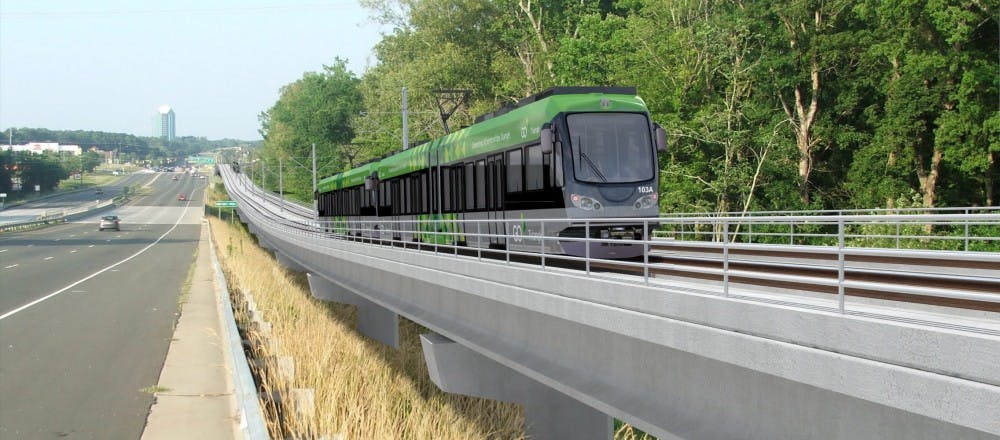The light rail project in Orange County took a big step forward in late January when Wake County officials helped clear the way for the project to gain state funding. Now, the goal to have reliable, sustainable transportation between Durham and Orange counties seems to be striding closer to reality.
After the Triangle area received approval to begin the engineering from the Federal Transit Administration in July 2017, energy and excitement about the project has risen in local governments.
“We are approaching the 50 percent mark in terms of design,” said Patrick McDonough, manager of planning and transit oriented development at GoTriangle, the area’s primary public transit operator. “At this point we are hoping to break ground in 2020 for construction of the Orange-Durham light rail.”
Once design is completed, GoTriangle and the Durham-Chapel Hill-Carrboro Metropolitan Planning Organization (DCHC-MPO) will apply for up to $1 billion in funding from the federal government's New Starts program.
Officials expressed some concern about the federal funding, citing President Donald Trump’s infrastructure proposal released on Monday.
“I feel frustrated that the federal government doesn't recognize that there was a huge commitment put forward for this project several years ago,” Carrboro Mayor Lydia Lavelle said. “We had spent thousands and thousands of dollars over the last couple of years working through the federal timeline and what we were required to do by the federal government to keep this project moving forward. This new plan doesn’t really reflect that commitment.”
McDonough and others at GoTriangle sympathized with these concerns, but said they are waiting for the official word from Congress before reacting to the White House’s numbers.
Leaders in both Durham and Orange counties agree that despite the light rail’s slow project timeline, it is well-worth the money and effort it has taken to push through.
“What it comes down to is connecting two of the biggest communities in the state together and improving congestion, air pollution and access for the people who live here,” Chapel Hill Mayor Pam Hemminger said.



